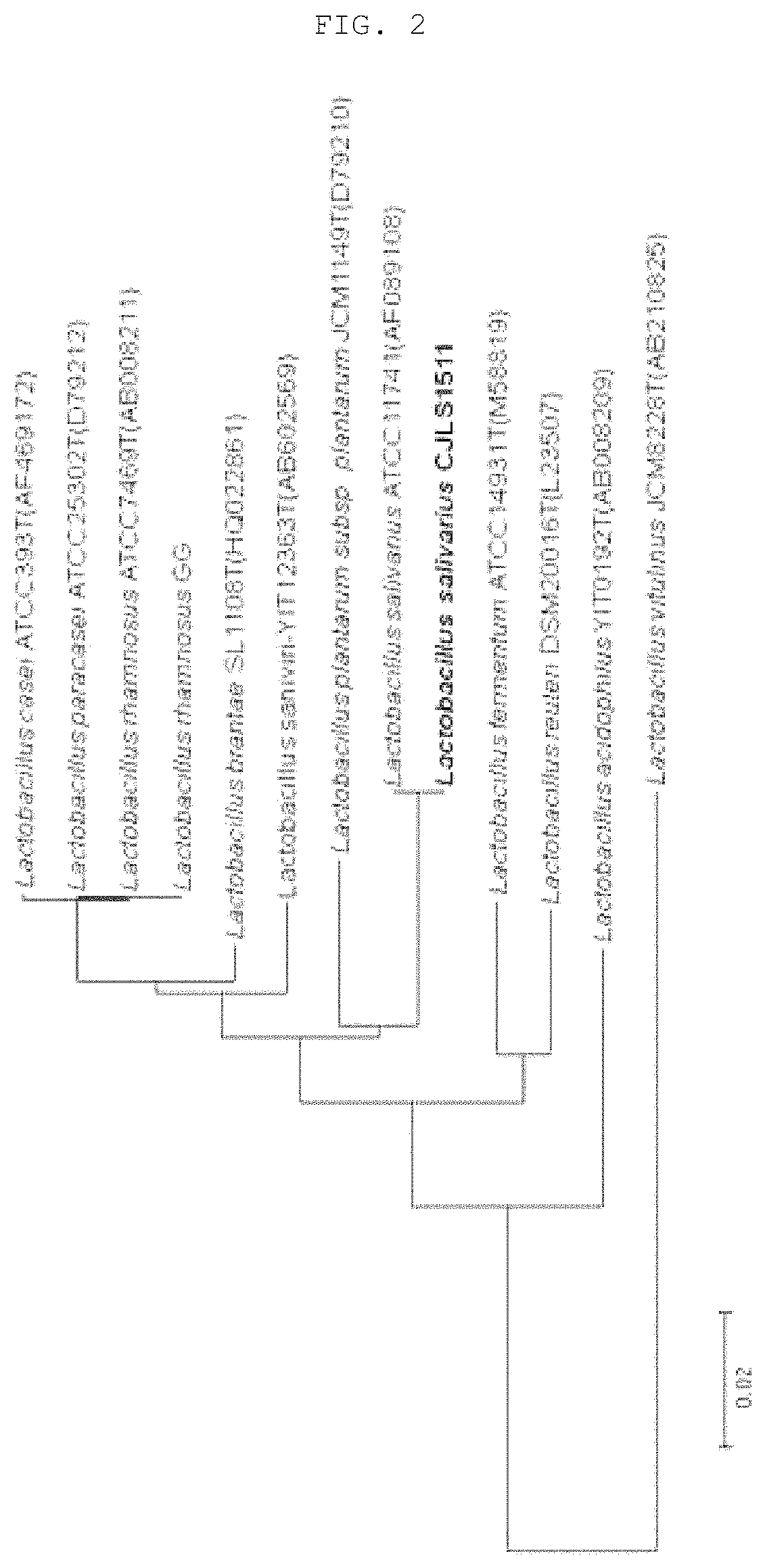Lactobacillus salivarius CJLS1511, animal feed additive composition comprising same bacterium or dead cells thereof, and method for producing same dead cells
a technology of lactobacillus salivarius and animal feed additives, which is applied in the direction of microorganisms, biochemical equipment and processes, and unknown materials, to achieve the effects of enhancing digestive enzyme activity, enhancing animal growth performance, and excellent ability to degrade neutral lipids
- Summary
- Abstract
- Description
- Claims
- Application Information
AI Technical Summary
Benefits of technology
Problems solved by technology
Method used
Image
Examples
preparation example 1
[0080]Lactobacillus salivarius CJLS1511 and Lactobacillus salivarius KCCM 40210 standard strains were streaked on MRS agar media with a loop, respectively, and cultured at 37° C. for 48 hours to prepare culture solutions.
[0081]Then, each culture solution was indirectly heated at a temperature of 100° C. using a heat exchanger, and rapidly cooled up to 10° C. at a rate of 30 to 100 L / min. The inactivated bacterial cells were separated from the rapidly cooled culture solution through a centrifuge (3,000×g, 10 minutes) to prepare inactivated bacterial cells of Lactobacillus salivarius CJLS1511 and Lactobacillus salivarius KCCM 40210, respectively.
preparation example 2
[0082]Lactobacillus salivarius CJLS1511 and Lactobacillus salivarius KCCM 40210 standard strains were streaked on MRS agar media with a loop, respectively, and cultured at 37° C. for 48 hours to prepare culture solutions.
[0083]Then, each culture solution was indirectly heated at a temperature of 100° C. using a heat exchanger, and rapidly cooled up to 10° C. at a rate of 30 to 100 L / min. The inactivated bacterial cells were separated from the rapidly cooled culture solution through a centrifuge (3,000×g, 10 minutes) to prepare the inactivated Lactobacillus salivarius CJLS1511 and Lactobacillus salivarius KCCM 40210, respectively. Then, yeast extract, dextrose, and raw sugar were mixed therewith, respectively. Each mixture was suspended in water, and the obtained suspension was subjected to spray drying to obtain powder. Here, specifically, the spray drying was performed under conditions in which a temperature of an inlet of hot air was 150° C., and a temperature of an outlet was 100...
PUM
| Property | Measurement | Unit |
|---|---|---|
| temperature | aaaaa | aaaaa |
| temperature | aaaaa | aaaaa |
| temperature | aaaaa | aaaaa |
Abstract
Description
Claims
Application Information
 Login to View More
Login to View More - R&D
- Intellectual Property
- Life Sciences
- Materials
- Tech Scout
- Unparalleled Data Quality
- Higher Quality Content
- 60% Fewer Hallucinations
Browse by: Latest US Patents, China's latest patents, Technical Efficacy Thesaurus, Application Domain, Technology Topic, Popular Technical Reports.
© 2025 PatSnap. All rights reserved.Legal|Privacy policy|Modern Slavery Act Transparency Statement|Sitemap|About US| Contact US: help@patsnap.com


